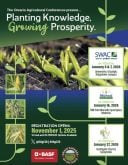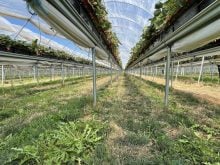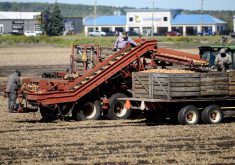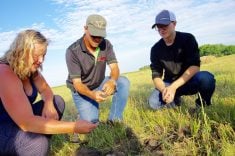Will the next Canadian agricultural technological revolution focus on yield or taste?
According to Tyler Whale, president of Ontario Agri-Food Technologies, an organization focused on technological development in food and agriculture, Canada’s farm and food sector must consider more than yield, stress tolerance, and other production factors to stay competitive and relevant to market demands.
Why it matters: Technology could help Canadian farmers remain competitive by helping them to address processing and consumer needs, as well as agronomic issues.
Read Also
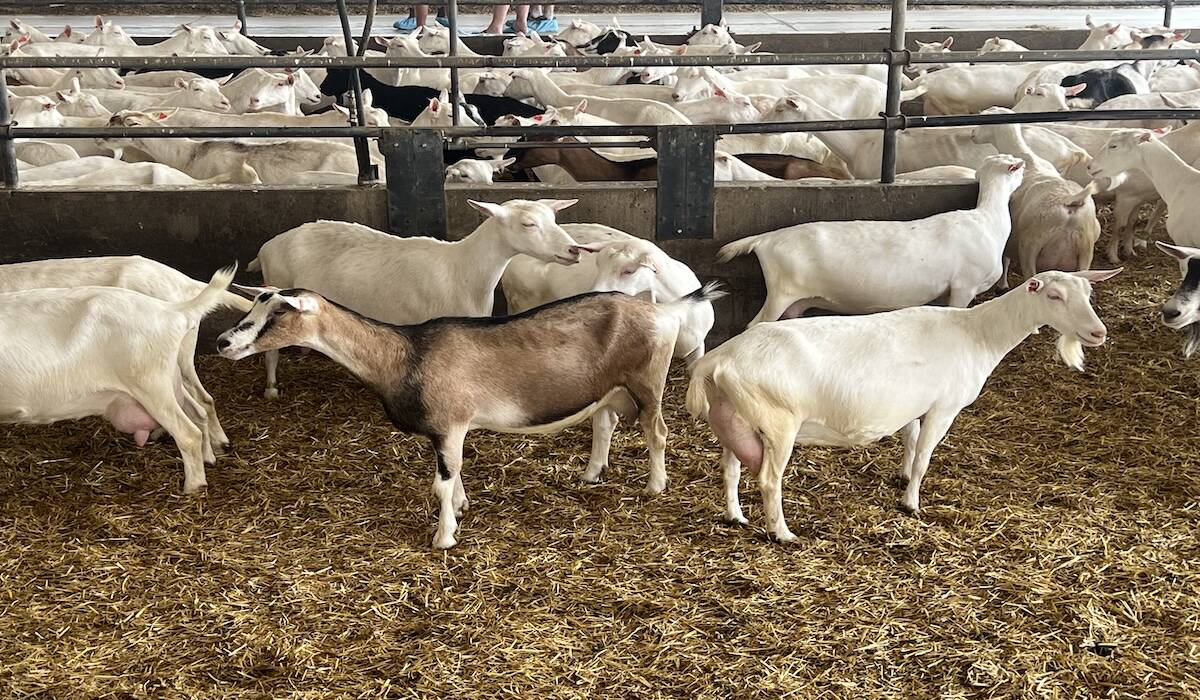
Ontario dairy goat producers move toward forming provincial board
Creation of a Dairy Goat Board under the Ontario Farm Products Marketing Commission may be voted on by early 2026.
In a presentation at the Ontario Processing Vegetable Growers annual conference in London on Jan. 31, Whale detailed major technologies currently disrupting modern life and industry. These include genetics, automation and autonomous robotics, small molecules such as nano-plastics, clean technology that reduces negative environmental impacts, and data science and artificial intelligence.
Whale says all of those five factors are relevant to agriculture. Genetic technology, however, takes one of the top spots because it can address a wide range of needs and necessities, including those directly from the consumer.
Whale says the farm and agricultural research community must find room for consumer demands, in addition to yield and tolerance goals.
“Things like Roundup Ready might have had enormous consumer benefits like productivity and price, but the consumer didn’t really see that, they were at least one step removed,” he says. “When you can, improve nutrition, improve shelf life, improve flavour. These are the kinds of things that are going to win the day.
“Then you get into things that are better for the farmer like stress tolerance and those kinds of things. And you don’t just have to manipulate genetics. You can use microbiomes, bacteria, things like that, but genes will be involved.”
Additionally, modern technology can help alleviate significant social and environmental problems, such as food waste, a widespread problem at both the consumer, producer and processing levels in Ontario. Developing agricultural products with greater longevity, like the non-browning Innate potato, is an example of something that can reduce waste at the pre-consumer level.
Efficient regulatory system key
Distinguishing between invention and innovation is important, says Whale. While invention is the result of research and research dollars at work, innovation happens when practical use of those inventions are worked out at the farm and processing level.
For innovation to succeed, though, Canada’s regulatory system needs to work in a way that allows access to, and the dissemination of, new technologies. Given the enormous amount of time, money and energy required to bring invention to a place where innovation is possible, clear and consistent pathways are necessary.
Whale provides the potential use of nitrogen-fixing bacteria as an example.
As part of an international research effort, he says, a Canadian company helped find a way to use endophyte bacteria, organisms that colonize the cells of a plant and fix nitrogen from the atmosphere, as a replacement for nitrogen fertilizer. The research and the field trials have been ongoing, but despite years of testing and the availability of the technology in 33 American states, Canadian plots where the bacteria are being further tested have to be destroyed.
Whale cites this as an example of a clear regulatory problem. Canada’s system might be rigorous and respected internationally, but it’s slow moving.
Whale says adopting new technology can be daunting; and at some point, individuals looking to adopt new tech have to take an uncomfortable leap.
“Ultimately farms are going from reactive to proactive to predictive. That’s where we want to get,” he says. “Progress is not possible without change.”






